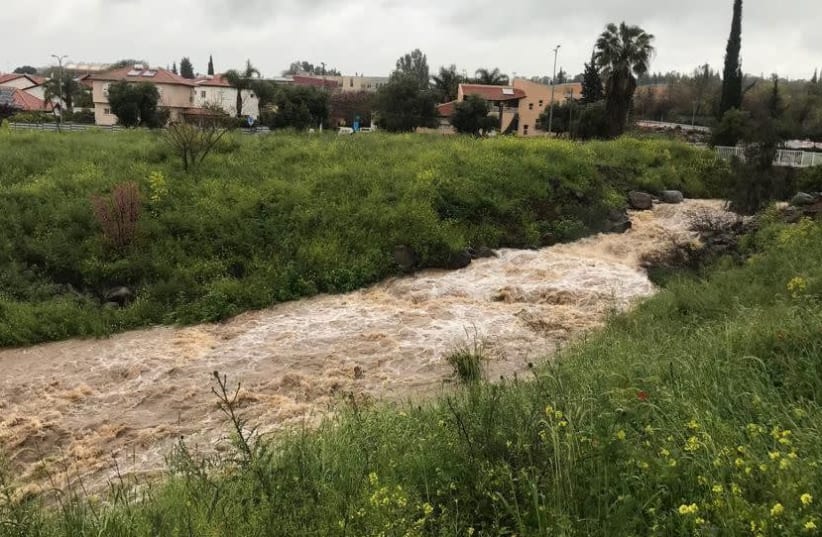The wet weather continued Monday as rain hit Jerusalem, Tel Aviv, Hebron, Haifa, and Mount Hermon where there were even snow flurries. Although no rain was forecast for the southern Negev region, skies were cold and cloudy.
The Sea of Galilee rose by 11 inches during the past 24 hours, and stood Monday morning at -211 meters below sea level, 1.44 meters higher than the lower red line, and 3.16 meters below the upper red line.The red lines mark the danger level in times of drought for the Galilee, known in Hebrew as the Kinneret, which is Israel's largest lake and the Jewish state's main water reservoir.
Dr. Barry Lynn, a meteorologist and senior researcher at the Hebrew University's Institute of Earth Sciences, and founder of the of weather it is forecast website spoke to The Jerusalem Post about the wet weather.
"Joseph predicted seven years of plenty followed by seven years of famine," he stated, referring to the famous Bible story. "But in our case we've had about seven years of drought now followed by unexpected rain.""Winter lasted longer than normal this year," he told the Post. He added that the dry weather from previous years has ironically resulted in more rain this year due to a trough of low pressure from Eastern Europe. The atmospheric conditions have also created more lightning than previous years.
